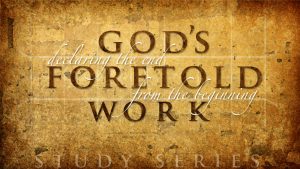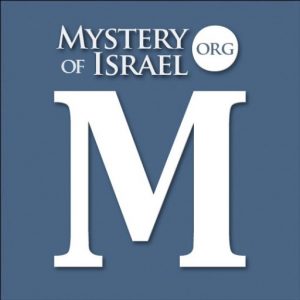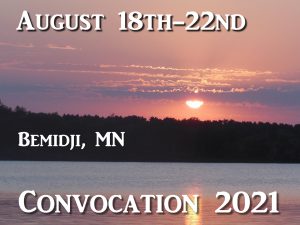My question is about the salvation of Israel in Romans 11:26 (“And so all Israel will be saved”). I am wondering if the ‘all’ spoken of in this verse, is all those (the remaining third) who survive the time of Jacobs trouble? Is the ‘all Israel’ simply all those who are alive at that time? Or does “all Israel” fit the description of Ezekiel 37 in the “life from the dead” resurrection and “opening of the graves and bringing into the land”, and the “dry bones” of the “whole house of Israel” literally coming to life and salvation in the promise of that God will “put my spirit in you”.
Also in this context, can you shed any light on the significance of the “four winds”, mentioned in Ezekiel 37 “prophesying unto the four winds”, and in Matthew 24:31 as “gathering together his elect from the four winds”?
You asked the perfect question. By His grace, I hope to reply soon. I had not noticed the four winds before, but it does fit perfectly with the timing of Mt 24:31, not only as fulfilled in the gathering of saints at the rapture (2Thes 2:1), but also in the gathering of the dispersed of Israel described in Isa 27:12-13.
I see these as distinct but simultaneous events. One is the gathering and translation of the church. The other is the ‘day of the Lord’ salvation of the penitent Jewish survivors of the tribulation. Then begins the final Jewish return from all nations that will leave none behind (Eze 39:28). When the great trumpet sounds, they are depicted as scattered among the nations and “ready to perish” (Isa 27:13).
Certainly, there can be no doubt that the trumpet of Isa 27:13 is one and the same with the trumpet of Mt 24:31 that Jesus mentions in connection with His return after the tribulation. It is also clear that the bones of Ezekiel are revived by the Spirit at the same time. I believe that the reference to the “four winds” used in both Eze 37:9 and Mt 24:31 is significant language for Israel’s scattered and utterly destitute condition when the Lord returns (Ps 102:13-17).
Interestingly, the time of the rapture for the church (last trumpet / day of the Lord) is the same time that the penitent survivors of the tribulation receive the Spirit (Isa 59:17-21; Eze 39:8, 22, 38; Joel 2:27-32; 3:14-16; Zech 12:10). So if the elect are being gathered from the four winds at Christ’s return, who are the elect? Are they the newly saved natural branches, or, are they the suffering saints of the tribulation? I believe it is both; the language is perfectly interchangeable and equally applicable to both. Let me explain.
I believe the scripture is best harmonized by recognizing that at the same moment the church is being translated, the survivors of Israel are receiving the transforming revelation of Jesus, as He returns in clouds of glory (Zech 12:10 with Mt 23:39; Ro 11:26; Rev 1:7). This means there are two distinct kinds of gathering that happen at the same time. Both converge at the last trump’ (Isa 27:13 with Mt 24:31; 1Cor 15:52; Rev 10:7; 11:15), which is also the day of the Lord (Mt 24:29 with Acts 2:20). The church is gathered to Christ in His victorious descent. In contrast, the newly regenerate nation is gathered back to the Land from all nations (Eze 39:28), not by supernatural rapture, but by natural means of transport with the glad assistance of gentile survivors (Isa 49:22; 60:9; 66:20; Zech 8:23).
A careful comparison of Scripture seems to make clear that Christ’s instantaneous gathering of the church is also the beginning of the world wide gathering of Israel back to the Land, and it is no contradiction if both should be presided over by the agency of angels (Mt 34:31). Paul’s use of Isaiah’s prophecy in 1Cor 15:52-54 shows that the trumpet of Isa 27:13 cannot be dissociated from his reference to the resurrection in the context of Israel’s post-tribulational salvation (compare Isa 25:7-9; 26:19; 27:13 in the larger context).
In view of such clear citation of Isaiah’s references to the resurrection of the Old Testament righteous (Isa 25:8; 26:19), it becomes impossible to suppose that Paul’s ‘last trump’ is a different trumpet that sounds seven years earlier, as taught by teachers of the pre-trib rapture. Rather, we understand that the “great trumpet” of Isa 27:13 and Mt 24:31 marks, not only the time that those already alive in Christ are gathered to Him (as Paul seems to understand in 2Thes 2:1, referencing Mt 24:31), but also the beginning of the return home for the scattered Jews that were “ready to perish” in hostile lands (Isa 27:13).
A number of scriptures indicate that Israel will be suddenly saved “at once’ and ‘in one day’ at this time (Isa 59:21; 66:8; Eze 39:22; Zech 3:9; 12:10; Ro 11:26; Rev 1:7). Other passages show that the newly saved nation is NOT changed into the glorified state at the last trump with those that were already alive in Christ. Rather, they are depicted as going into the millennium in natural bodies. This is further evidence that Paul’s view of the salvation of ‘all Israel’ is not to be confused with the gradual salvation of Jews that will be saved before the rapture, since these would obviously be included in Paul’s, “we shall ALL be changed” of 1Cor 15:23, 52 at the rapture.
Scripture is best harmonized by distinguishing between living believers that are changed at the last trump, and the surviving remnant of Israel that comes to faith suddenly at the return of Christ (Zech 12:10 with Mt 23:39; Ro 11:26; Rev 1:7), as their hearts have been prepared for that revelation through great travail and the witness of the church. The division that takes place between between the glorified redeemed and the newly born nation at the day of the Lord / last trumpet (Isa 27:13; Mt 24:31; 1Cor 15:52; Rev 10:7; 11:15) has a clear and logical purpose.
God’s purpose for the earth is not complete with the rapture of the church, but requires the millennial vindication of His covenant with Israel, as a specially elect nation at the head of the nations. God has bound His name and covenant oath to this millennial demonstration. He manifestly intends to publicly vindicate “His covenant with them” in the sight of all nations, but particularly and necessarily through a people of real ethnic descent from the fathers (Ro 11:28-29), who, although full of the Holy Spirit, are necessarily left in the weakness of their natural bodies for a thousand years of open witness, before passing on to the final perfection.
Notice how different the two gatherings are: Whereas the tribulation saints are instantaneously and miraculously translated at the last trump, the surviving Jews that are only now seeing Jesus (not merely physically, of course, but by revelation of the Spirit), now begin to make their way home by every conceivable mode of transport, assisted by supportive gentiles (compare Isa 49:22; 60:9; 66:20; Zech 8:23).
Notice also how Isa 27:12-13 parallels Isa 11:15-16, leaving no question of the time in view. It is after the Antichrist has been destroyed at Christ’s return. The resurrection of Israel happens in one day (Isa 66:8; Eze 39:22; Zech 3:9; Ro 11:26; Rev 1:7). It is at the sound of the great trumpet. It is the same time the Spirit is poured out (Eze 39:28-29; Zech 12:10).
This is when they begin their final return, no longer a remnant, but an entirely regenerate nation (compare Isa 4:3; 45:22; 54:13; 59:21; 60:21; 66:22, Jer 31:34; Zeph 3:13), able now to persevere in true holiness and so abide in security in the Land. This is what it will take to fulfill the covenant as conceived and understood by the prophets (I’ll share more on this in my more complete answer). This is the end and goal that Paul sees as necessary to the fulfillment of “My covenant unto them” (Ro 11:26-27; Isa 27:9; 59:21; Zech 3:9).
Paul’s term, “the fullness of the gentiles,” is the Old Testament equivalent of the day of the Lord (compare Eze 30:3; Lk 21:24). This is the time that the prophets envision the final shattering of the power of the gentiles and the return of the kingdom to Israel. “From that day and forward” (Eze 39:8, 22), there will not exist in all the Land a single Jew that does not know the Lord (Jer 31:34). Let that sink down.
In all the nations, there will be some that do not willing comply with the rod iron rule of the king, as many will ultimately rebel at the end of millennium, but in this one Land among this one people, there will be uniform salvation, and this will not pass away from them, but continue steadfast unto children’s children (Isa 54:13; 59:21; 66:22), so that there will be no more occasion for evangelism among the Jewish inhabitants of the Land (Jer 31:34). That is what “all Israel” meant to the prophets, and that is what I believe it means for Paul. If this is the end of the covenant as it applies to the natural branches, the question for us is ,why? What is God saying through such an astonishing demonstration?
Many miss Paul’s intention entirely by assuming that he has in view a progressive process that aims at the eventual full gathering of all of God’s elect, with an extra number of ethnic Jews tacked on somewhere towards the end, but not in the sense of a covenant necessity based on an abiding election that requires their full return by a miracle of divine intervention. The salvation of Israel may come at the end of a process (‘Jacob’s trouble’), but it is a supernatural sudden transforming event, by which a nation is born in a day. In that sense, it is NOT a process, but a resurrection event!
To completely settle beyond any reasonable question that the Deliverer’s coming out of Zion is not a reference to our Lord’s first advent, but to the transitional day of the Lord at the end of the tribulation, compare carefully Isa 59:21 in the larger context of Isa 59:16-21 with Isa 63:3-7.This is decisive; there can be no question that Paul has in view the day concerning which every prophet spoke when envisioning the salvation of ‘all Israel.’
To come back to your question about the four winds, it is interesting that at the same moment the wind of the Spirit is breathing on the bones (Eze 37:9), the great trumpet is sounds (compare Isa 27:13 with Mt 24:31) that signals the world wide return of the Jewish survivors of the tribulation who are now seeing Him whom they pierced. This is happening at the same time that the church is being miraculously translated (“our ‘gathering together’ unto Him” 2Thes 2:1).
It is all happening at once at the day of the Lord. And lest we think of the day of the Lord as a prolonged period of time, compare Mt 24:29 with Acts 2:20. There we see that the day of the Lord is clearly AFTER the stellar darkness, which Jesus says comes “immediately AFTER the tribulation of those days.” Regardless of whether we believe the day of the Lord includes the millennium, a number or scriptures agree to show that it does NOT include the tribulation, but comes at its end. For Isaiah, Ezekiel, and Zechariah, it is “one day.” For Paul, the time of the great transition is even more precise, “In a moment; in the twinkling of an eye …” (1Cor 15:52).
I hope to get back to you soon and deal more at length with the much disputed phrase, “and so all Israel shall be saved,” because I believe, as you seem already to sense, that so much hangs on how we see that phrase, not only for Israel’s millennial future, but our whole understanding of how and why the last days end in the way they do. This will be crucial, not only for how the church understands it role towards Israel, but of God’s perfect strategy in making the last day’s crisis of Israel and the issue of Jewish election a watershed of division that will test every heart, in a way not too different from how the mystery surrounding Jesus was “set for the fall and rising of many in Israel; and a sign which shall be spoken against” (Lk 2:34). More on that when time permits.
Your brother, Reggie




